CAA News Today
Grants, Awards, and Honors
posted by CAA — June 15, 2016
CAA recognizes its members for their professional achievements, be it a grant, fellowship, residency, book prize, honorary degree, or related award.
Grants, Awards, and Honors is published every two months: in February, April, June, August, October, and December. To learn more about submitting a listing, please follow the instructions on the main Member News page.
June 2016
Kim Bobier, a doctoral candidate in art history at the University of North Carolina, Chapel Hill, has won a 2016 Henry Luce Foundation/ACLS Dissertation Fellowship in American Art from the American Council of Learned Societies. Her research project is titled “Representing and Refracting the Civil Rights Movement in Late Twentieth-Century Art.”
Judith K. Brodsky, distinguished professor emerita of the Visual Arts Department at Rutgers University in New Brunswick, New Jersey, has received an honorary doctor of fine arts degree from Rider University in Lawrence Township, New Jersey.
Sinem Arcak Casale, assistant professor of art history at the University of Minnesota, Twin Cities, has been named a 2016 ACLS Fellow by the American Council of Learned Societies. Her project is titled “Courtly Encounters in War and Peace: Ottoman-Safavid Gift Exchange, 1501–1660.”
Zirwat Chowdhury, visiting faculty member in art history at Bennington College in Bennington, Vermont, has been named a 2016–17 National Endowment for the Humanities Fellow by the Getty Research Institute in Los Angeles, California. Chowdhury will work on “The Vociferant Image: Sound and the Ethics of Empire in 18th-Century British Art and Visual Culture” from September 2016 to April 2017.
Carolyn Dean, professor of history of art and visual culture at the University of California, Santa Cruz, has been named a 2016–17 Getty Scholar by the Getty Research Institute in Los Angeles. Dean will work on her project, “The Non-Image Challenge to Art History and Anthropology,” between September 2016 and June 2017.
Elisa Dainese, an architect and lecturer in the University of Pennsylvania’s History of Art Department in Philadelphia, has won a 2016 Membership Grant from the Society of Architectural Historians.
Nancy Demerdash of Princeton University in Princeton, New Jersey, has accepted the 2016 Spiro Kostof Fellowship from the Society of Architectural Historians.
Yvonne Elet has earned a 2016 SAH/Mellon Author Award from the Society of Architectural Historians.
Savannah Esquivel of Northwestern University in Evanston, Illinois, has won the the 2016 Edila and Francois-Auguste de Montequin Junior Fellowship from the Society of Architectural Historians.
Keith Garubba, a faculty member of the Baum School of Art in Allentown, Pennsylvania, has won a 2016 Arts Ovation Award in the emerging-artist category from the Allentown Arts Commission and the city of Allentown.
Dale Allen Gyure, professor of architecture at Lawrence Technological University in Southfield, Michigan, and adjunct assistant professor of historic preservation at Goucher College in Baltimore, Maryland, has been awarded a 2016 publication grant from the Graham Foundation for his book Serenity and Delight: The Architecture of Minoru Yamasaki, to be published by Yale University Press.
Patrick Thomas Hajovsky, associate professor in the Sarofim School of Fine Arts at Southwestern University in Georgetown, Texas, has been named a 2016–17 Getty Scholar by the Getty Research Institute in Los Angeles, California. He will work on “Currencies of Wealth and Fame: The Social Lives of Luxury Objects in Aztec Mexico” from April to June 2017.
Grace T. Harpster, a PhD candidate in the History of Art Department at the University of California, Berkeley, has been named a 2016–17 Getty Predoctoral Fellow by the Getty Research Institute in Los Angeles, California. She will work on “Carlo Borromeo’s Itineraries” between September 2016 and June 2017.
Leslie Hewitt, an artist based in New York, has won a publication grant from the Graham Foundation for Untitled (Structures), a book to be produced with Bradford Young and published by Dancing Foxes Press.
Michael Ann Holly, consulting director and Starr Director Emeritus of the Research and Academic Program at the Sterling and Francine Clark Art Institute in Williamstown, Massachusetts, has been named a 2016–17 Guest Scholar by the Getty Research Institute in Los Angeles, California. She will research “At the Back of the Painted Beyond / At the Still Point of the Painted World” from January to March 2017.
Shih-shan Susan Huang, associate professor of art history at Rice University in Houston, Texas, has won a 2016 Frederick Burkhardt Residential Fellowship from the American Council of Learned Societies. She will be in residence at the Huntington Library, Art Collection, and Botanical Gardens in San Marino, Califorina, during academic year 2017–18, working on “First Impressions: Chinese Religious Woodcuts and Cultural Transformation.”
H. H. Joyce of the University of Oxford in England has accepted the 2016 Scott Opler Emerging Scholar Fellowship from the Society of Architectural Historians.
Kate M. Kocyba has won a 2016 Membership Grant from the Society of Architectural Historians.
Lauren Kroiz, assistant professor in the History of Art Department at the University of California, Berkeley, has won the Smithsonian American Art Museum’s 2015 Patricia and Phillip Frost Essay Award. Kroiz’s article, “‘A Jolly Lark for Amateurs’: John Steuart Curry’s Pedagogy of Painting,” appeared in the spring 2015 issue of American Art.
Anneka Lenssen, assistant professor of global modern art in the History of Art Department at the University of California, Berkeley, has been named a 2016–17 Getty Postdoctoral Fellow by the Getty Research Institute in Los Angeles. She will continue work on “Being Mobilized: The Vitality of Arab Art, 1930–1960” between September 2016 and June 2017.
Michael Lobel, professor of art history at Hunter College, City University of New York, has been awarded the twenty-eighth Charles C. Eldridge Prize for Distinguished Scholarship in American Art for his book John Sloan: Drawing on Illustration (New Haven: Yale University Press, 2014).
Maura Lucking, an architectural historian pursuing a PhD in critical studies from the Department of Architecture and Urban Design at the University of California, Los Angeles, has won a 2016 film grant from the Graham Foundation for Church of Schindler, a project in collaboration with the Los Angeles–based documentary filmmaker Andrea Lewis.
Ellen Macfarlane, a doctoral candidate in art and archaeology at Princeton University in Princeton, New Jersey, has won a 2016 Henry Luce Foundation/ACLS Dissertation Fellowship in American Art from the American Council of Learned Societies for her study, “Group f.64 Photography and the Object World.”
Luciana Martins, reader in Latin American visual studies at Birkbeck, University of London, in England, has been awarded a 2016 Leverhulme Research Fellowship for two years for a project entitled “Drawing Together: The Visual Archive of Expeditionary Fieldwork.”
Jeffrey A. Miller has won a 2016 Membership Grant from the Society of Architectural Historians.
Kimberly Minor, a doctoral candidate in art and art history at the University of Oklahoma in Norman, has won a 2016 Henry Luce Foundation/ACLS Dissertation Fellowship in American Art from the American Council of Learned Societies. Her project is titled “Pictographic Motifs: Memory and Masculinity on the Upper Missouri.”
Keith Moxey, Barbara Novak Professor in the Department of Art History at Barnard College in New York, has been named a 2016–17 Guest Scholar by the Getty Research Institute in Los Angeles, California. Moxey will research “Temporalities of Art History” between September and December 2016.
John Murphy has been awarded the 2016 Amy P. Goldman Foundational Fellowship in Pre-Raphaelite Studies from the Delaware Art Museum and the University of Delaware Library, both in Wilmington.
Stella Nair, associate professor in the Department of Art History at the University of California, Los Angeles, has won the Charles K. Williams II Rome Prize from the American Academy of Rome. She will continue work on “Rome in the Andes: The Impact of the Classical World on Inca Architectural History.”
Elisabeth Narkin, a PhD candidate in the Department of Art, Art History, and Visual Studies at Duke University in Durham, North Carolina, has received the 2016 Carter Manny Award for doctoral dissertation research from the Graham Foundation. Her project is called “Rearing the Royals: Architecture and the Spatialization of Royal Childhood in France, 1499–1610.”
Lawrence Nees, professor in the Department of Art History at the University of Delaware in Newark, has been named a 2016–17 Museum Guest Scholar by the Getty Research Institute in Los Angeles, California. Research for his project, “Host Department: Manuscripts,” will take place between April and June 2017.
Christina Neilson, assistant professor of Renaissance and Baroque art history at Oberlin College in Oberlin, Ohio, has been named a 2016 ACLS Fellow by the American Council of Learned Societies. She will continue research on “Living Devotion: Animating Sculpture in Early Modern Europe.”
Fernando Martínez Nespral from the University of Buenos Aires in Argentina has accepted a place in the 2016 SAH-Getty International Program by the Society of Architectural Historians.
Emily Neumeier of the University of Pennsylvania in Philadelphia has won the 2016 Keepers Preservation Education Fund Fellowship from the Society of Architectural Historians.
Amy F. Ogata, associate professor at the Bard Graduate Center: Decorative Arts, Design History, Material Culture in New York, has won the 2016 Alice Davis Hitchcock Book Award from the Society of Architectural Historians for Designing the Creative Child: Playthings and Places in Midcentury America (Minneapolis: University of Minnesota Press, 2013).
Pauline Ayumi Ota, associate professor of art and art history at DePauw University in Greencastle, Indiana, has accepted a 2016 Frederick Burkhardt Residential Fellowship from the American Council of Learned Societies. She will work on “Seeing Is Knowing: Visual Perception, Painting, and Cityscapes in Mid-Eighteenth Century Japan” at the Asian Studies Program at the University of Hawai‘i in Manoa during academic year 2016–17.
John Ott, professor of art history at James Madison University in Harrisonburg, Virginia, has received a 2016 Summer Stipend from the National Endowment for the Humanities to work on his book project, “Mixed Media: The Visual Culture of Racial Integration, 1931–1954.”
Nina Rowe, associate professor of art history and music at Fordham University in Bronx, New York, has been named a 2016 ACLS Fellow by the American Council of Learned Societies. She will work on “The World in a Book: Weltchroniken and Society at the End of the Middle Ages.”
Corine Schleif, a professor for the Herberger Institute for Design and the Arts at Arizona State University in Tempe, has received the 2015–16 Berlin Prize and is currently John P. Birkelund Fellow in the Humanities at the American Academy in Berlin, where she is completing the book Bending Stone: Adam Kraft and the Sculpting of Art’s History.
Emma Rose Silverman, a doctoral candidate in history of art at the University of California, Berkeley, has won a 2016 Henry Luce Foundation/ACLS Dissertation Fellowship in American Art from the American Council of Learned Societies for her research project, “From Eyesore to Icon: Outsider Art, Racial Politics, and the Watts Towers.”
Kristel Smentek, associate professor of architecture for the Massachusetts Institute of Technology in Cambridge, Massachusetts, has been named a 2016 ACLS Fellow by the American Council of Learned Societies. Her research project is called “Objects of Encounter: China in Eighteenth-Century France.”
Giulia S. Smith, a PhD candidate in the History of Art Department at University College London, England, has been named a 2016–17 Getty Predoctoral Fellow by the Getty Research Institute in Los Angeles, California. She will work on her project, titled “An Anthropology of Ourselves: The Independent Group from Urban Fieldwork to Global Ecology, 1929–1973,” from September 2016 to June 2017.
Joseph Williams, a PhD candidate in the Department of Art, Art History, and Visual Studies at Duke University in Durham, North Carolina, has won the Phyllis W. G. Gordan/Lily Auchincloss/Samuel H. Kress Foundation Pre-Doctoral Rome Prize from the American Academy in Rome. He will continue researching “The Practice and Production of Architecture during the Mediterranean Commercial Revolution: The Church of S. Corrado in Molfetta (ca. 1185–1303).”
Fo Wilson, an artist and associate professor at Columbia College Chicago in Illinois, has won a 2016 exhibition grant from the Graham Foundation. He will use the funds to produce Eliza’s Peculiar Cabinet of Curiosities, on view at the Lynden Sculpture Garden in Milwaukee, Wisconsin, from June 26 to October 30, 2016.
Mary N. Woods, Michael A. McCarthy Professor of Architectural Theory at Cornell University in Ithaca, New York, has been awarded a publication grant from the Graham Foundation for her book Women Architects in India: Histories of Practice in Mumbai and Delhi, to be published by Routledge.
Daniel M. Zolli, a PhD candidate in the History of Art and Architecture Department at Harvard University in Cambridge, Massachusetts, has been named a 2016–17 Getty Predoctoral Fellow by the Getty Research Institute in Los Angeles, California. He will work on “Voices in the Workshop: Donatello and Theories of Making in Fifteenth-Century Oral Culture” from September 2016 to June 2017.
Exhibitions Curated by CAA Members
posted by CAA — June 15, 2016
Check out details on recent shows organized by CAA members who are also curators.
Exhibitions Curated by CAA Members is published every two months: in February, April, June, August, October, and December. To learn more about submitting a listing, please follow the instructions on the main Member News page.
June 2016
Rachel Epp Buller. Alice Lex-Nerlinger 1893–1975: Fotomonteurin und Malerin. Das Verborgene Museum, Berlin, Germany, April 14–August 7, 2016.
Rachel Epp Buller. Transition and Turmoil: Human Expressions 1900–1945. Ulrich Museum of Art, Wichita State University, Wichita, Kansas, January 16–May 8, 2016.
Rhia Hurt and Katerina Lanfranco. Laughing Out Loud. Trestle Gallery, Brooklyn, New York, April 15–June 3, 2016.
Kristen Letts Kovak. Degrees of Separation. SPACE, Pittsburgh, Pennsylvania, April 15–June 5, 2016.
Books Published by CAA Members
posted by CAA — June 15, 2016
Publishing a book is a major milestone for artists and scholars—browse a list of recent titles below.
Books Published by CAA Members appears every two months: in February, April, June, August, October, and December. To learn more about submitting a listing, please follow the instructions on the main Member News page.
June 2016
Kyra Belán. Divine Ladies in America: Cultural Icons of the New Millennium (Cape Coral, FL: Astarte Books, 2016).
Rachel Epp Buller. Alice Lex-Nerlinger 1893–1975: Fotomonteurin und Malerin / Photomontage Artist and Painter (Berlin: Lukas Verlag and Das Verborgene Museum, in cooperation with Akademie der Künste, 2016).
Daniel Fulco. Exuberant Apotheoses – Italian Frescoes in the Holy Roman Empire; Visual Culture and Princely Power in the Age of Enlightenment (Leiden, the Netherlands: Brill, 2016).
New Faces for CAA’s Publications
posted by CAA — June 15, 2016
The president of the CAA Board of Directors, Suzanne Preston Blier, has confirmed new appointments to the editorial boards of CAA’s three scholarly journals and to the Publications Committee, in consultation with the vice president for publications, Gail Feigenbaum.
The Art Bulletin
A new member-at-large has joined the Art Bulletin Editorial Board. Laura Weigert is an associate professor at Rutgers University in New Brunswick, New Jersey, whose area of specialization is Northern European art of the late Middle Ages and Renaissance. Her term on the editorial board runs through June 2020.
Art Journal
Three new at-large members have joined the Art Journal Editorial Board. Tatiana E. Flores, associate professor at Rutgers University in New Brunswick, New Jersey, with a joint appointment in the Department of Art History and the Department of Latino and Caribbean Studies, specializes in Latin American and contemporary art. She is also active as an independent curator. Amelia G. Jones, a historian and theorist of contemporary art and performance studies, is Robert A. Day Professor of Art and Design and vice dean of critical studies at the University of Southern California’s Roski School of Art and Design in California. Derek Conrad Murray, associate professor of contemporary art and visual culture at the University of California, Santa Cruz, focuses on the junctures of African American and African diasporic art, postblack art and aesthetics, cultural theory, and identity and representation. The term for each new editorial-board member goes through June 2020.
In addition, Tirza T. Latimer, chair of the graduate program in visual and critical studies at California College of the Arts in San Francisco and a member of the Art Journal Editorial Board since 2014, will now serve as its chair. Her term extends through June 2018.
caa.reviews
The caa.reviews Editorial Board welcomes Juliet Bellow, associate professor of art history at American University in Washington, DC, as editor designate for the journal. She will begin a three-year term as editor-in-chief on July 1, 2017. Bellow has been a field editor for books on nineteenth-century art and served on the journal’s editorial board for the past four years. Andrei Pop, associate professor for the Department of Art History and the John U. Nef Committee on Social Thought at the University of Chicago in Illinois, has joined the caa.reviews Editorial Board after serving as field editor for books on theory and historiography.
caa.reviews recently added design history as a subject area, and Karen Carter, an associate professor from the Kendall College of Art and Design at Ferris State University in Grand Rapids, Michigan, will be the first editor to commission books on the subject. In addition, Iris Moon, visiting assistant professor of architecture at Pratt Institute in Brooklyn, New York, has joined the journal’s Council of Field Editors to commission reviews for books on eighteenth-century art. Alpesh Kantilal Patel, assistant professor and director of the MFA program in visual arts at Florida International University in Miami, currently serves as field editor for books on contemporary art.
Publications Committee
Emily Shapiro has joined CAA’s Publications Committee as member-at-large for a term of three years. Shapiro is managing editor of the Archives of American Art Journal, after serving as executive editor for American Art.
News from the Art and Academic Worlds
posted by Christopher Howard — June 15, 2016
Each week CAA News publishes summaries of eight articles, published around the web, that CAA members may find interesting and useful in their professional and creative lives.
Online Platforms Are Not Enough. Artists Need Affordable Space
In 2008, a bunch of friends and I built out and managed a studio space in Brooklyn. We signed a five-year lease, with a three-year option, and hoped for the best. We wanted to make our work and to innovate. This meant taking risks and failing often, and we needed low overhead to make this possible. (Read more from Creativz.)
The Best Intentions: Inside the Wild World of Charity Auctions
Benefit auctions have become about as ubiquitous as art fairs and openings. Charity sales are the primary means by which artists can pack a philanthropic punch, but they can also burden those who donate work with drawbacks and tax disadvantages. People have been questioning the model for years, but these conversations tend to stall in the absence of alternatives. (Read more from ARTnews.)
Against the Crowdfunding Economy
Which people get to live their dreams and which do not? In the art world, as elsewhere, success is often tightly correlated with pedigree and acceptance into elite institutions. And amid the increasing consumption of digital media, the conditions for success have become ever more fraught. (Read more from Jacobin.)
Public Art Piece Uses Augmented Reality to Explore Our Relationship to Technology
Public art has the power to shift not only our perspectives on specific sites, but also our relationship to space and location more generally. The artist Ivan Toth Depeña has created a multilayered public work of art, called Lapse, that considers these themes along with the ways we use technology. (Read more from PSFK.)
Copyright Q&A
The Copyright Alliance asked creators to submit questions about the copyright registration process. Rob Kasunic, director of registration policy and practices at the US Copyright Office, answered a few of them to provide clarity about the process. (Read more from the Copyright Alliance.)
How User-Friendly Are Museum Image Rights?
Display at Your Own Risk is a primarily web-based exhibition that examines the current status of digital cultural heritage and public accessibility to it through the online collections of some of the world’s most physically frequented museums. Spearheaded by Andrea Wallace, Display approaches the task from an internet user’s perspective to see if an institution provides the everyday person with enough information to avoid violating its image rights. (Read more from Hyperallergic.)
Liberal-Arts Majors Have Plenty of Job Prospects, If They Have Some Specific Skills, Too
The knock that liberal-arts graduates have a tough time landing a first job is confirmed by data. Yet a new analysis of help-wanted postings for entry-level jobs suggests that those graduates can improve their prospects by acquiring a small level of proficiency in one of eight specific skill sets, such as social media or data analysis. (Read more from the Chronicle of Higher Education.)
Advice for the Newly Tenured
I would love to share with you the three biggest mistakes that I observe newly tenured faculty members make. If you know what those mistakes are, then you are not only far less likely to make them, but you also have the opportunity to experiment with new ways of thinking and working that will help you to truly enjoy your tenured status. (Read more from Inside Higher Ed.)
Lead a Professional Development Workshop at CAA 2017
posted by CAA — June 14, 2016
Do you have a knack for sharing your knowledge with others and are enthusiastic about doing so? CAA seeks active members who are well established in their fields to serve as leaders for 90-minute Professional Development Workshop offerings at the 2017 Annual Conference at the New York Hilton Midtown from February 15-18.
The Annual Conference Committee and Programs Department aims to provide CAA members with re-vamped, affordable, and relevant professional development opportunities for 2017. But we need your help to do it! We encourage your collaboration and we welcome your proposals! Sample titles and/or subjects could run from, “Creating Online Exhibitions” to “Thinking Outside the Tenure Track.”
For more details, requirements, and submissions please visit the submissions page.
Workshop leaders will receive complimentary conference registration, a complimentary ticket to the 2017 Opening Reception, and one year of Premium Level Membership (renewal or upgrade to commence upon current membership’s expiration date) in exchange for their work as a leader.
Deadline for submissions: Monday, July 18, 2016.
For questions and more information please contact Katie Apsey at kapsey@collegeart.org
Art History Pedagogy and Practice Now Live on Digital Commons
posted by michelle — June 13, 2016
 Art History Teaching Resources (AHTR), in partnership with the Office of Library Services at the City University of New York (CUNY), is excited to announce the launch of Art History Pedagogy and Practice (AHPP) on Academic Works’ Digital Commons platform. Published by AHTR, a practitioner-led, open-educational resource for educators who address art history, visual culture, and material culture, AHPP is the first academic journal dedicated to the scholarship of teaching and learning in art history (SoTL-AH). The result of a two-year initiative, AHPP responds to a long-standing need to advance, collect, disseminate, and demonstrate pedagogical research specific to the discipline. The call for papers for the inaugural issue, forthcoming in fall 2016, is available on the AHTR website.
Art History Teaching Resources (AHTR), in partnership with the Office of Library Services at the City University of New York (CUNY), is excited to announce the launch of Art History Pedagogy and Practice (AHPP) on Academic Works’ Digital Commons platform. Published by AHTR, a practitioner-led, open-educational resource for educators who address art history, visual culture, and material culture, AHPP is the first academic journal dedicated to the scholarship of teaching and learning in art history (SoTL-AH). The result of a two-year initiative, AHPP responds to a long-standing need to advance, collect, disseminate, and demonstrate pedagogical research specific to the discipline. The call for papers for the inaugural issue, forthcoming in fall 2016, is available on the AHTR website.
SoTL in Art History
AHPP results from a two-year initiative that sought to examine the ways in which art historians devote time, effort, and energy to classroom teaching, curriculum development, and student engagement. Generously funded by the Samuel H. Kress Foundation, AHTR began preliminary research in 2015, which included a field-wide survey conducted by Randi Korn and Associates and a literature review assessing existing pedagogical scholarship in art history. These findings were synthesized in a white paper that demonstrated the need for SoTL-AH to be acknowledged as a legitimate area of intellectual inquiry by the institutions and communities encompassing academic art history. As a peer-reviewed journal devoted to SoTL-AH, AHPP will facilitate this process by providing scholars a forum to share research on pedagogical topics and by encouraging further academic investigation and discourse around teaching and learning in art history.
Art History Teaching Resources
AHPP builds on the success of AHTR as a platform to exchange ideas related to pedagogy in art history. Founded on dual goals to raise the value of the academic labor of teaching and to provide peer support across ranks of tenured, tenure-track, and contingent instructors, AHTR began as a collaboration between Michelle Millar Fisher at the Graduate Center and Karen Shelby at Baruch College in 2011. Fisher, then a graduate teaching fellow with a background in museum education, and Shelby, then assistant professor of art history, organized meetings where colleagues shared teaching materials and experiences. These gatherings suggested potential for a digital forum to connect a wider community of practitioners and gave rise to the arthistoryteachingresources.org website, which launched publicly in 2013.
Since that time, the site has had more than 400,000 hits from over 91,000 educators in K-12, postsecondary institutions, and art museums, and from academic support staff including reference librarians and curriculum designers. AHTR’s administration has similarly expanded to a leadership collective of art historians, ranging in experience from early career scholars to those well established in the field, and an advisory network, assembled for expertise and leadership in art history, museum education, and digital humanities and united by their interest in advancing pedagogical research. The unique relationship between AHPP and AHTR will give scholars access to diverse resources about teaching and learning—including lesson plans and the AHTR Weekly on the OER—as well as peer-reviewed articles published in the journal.
AHPP in Digital Commons
In choosing the Digital Commons platform, AHPP is enthusiastic to extend the relationship with CUNY that was first established when AHTR was born in the Graduate Center’s New Media Lab with support from Baruch Learning and Technology Grants. In keeping with the site’s origins, AHTR also contracted CHIPS, a New York web-development studio known for innovative work with cultural institutions, including the Metropolitan Museum of Art’s Heilbrunn Timeline of Art History and 82nd and Fifth. CHIPS also redesigned the AHTR website in 2014 and created the AHPP logo.
The editors, editorial collective, and advisory board of AHPP are excited to join CUNY’s Office of Library Services in the broader open-access movement and look forward to the ways in which journal contributions will be used in the fields of SoTL, art history, and beyond. AHPP worked closely with librarians at the Office of Library Services to develop editorial policies and guidelines that are transparent to authors and readers.
AHTR and CAA
Members of the AHTR advisory board have recently collaborated with CAA’s Education Committee. At the 2016 Annual Conference in Washington, DC, Renee McGarry spoke on “Crowdsourcing the Art History Survey: How Communities and Conversations Might Help Shape the Global Survey 3.0” in a session cochaired by Anne R. Norcross, an Education Committee member. In addition, AHTR advisory-board member Kelly Donahue Wallace has been collaborating with the committee’s Denise Baxter, including leading a workshop on SoTL initiatives at next year’s conference in New York.
This Week in caa.reviews
posted by CAA — June 10, 2016
James M. Córdova on sixteenth-century murals in Mexico: Penny Morrill, The Casa del Deán: New World Imagery in a Sixteenth-Century Mexican Mural Cycle.
Lynne Ellsworth Larsen on the relationship between art and language in Yoruba art: Rowland Abiodun, Yoruba Art and Language: Seeking the African in African Art.
Terri Weissman reviews the inaugural exhibition at the new Whitney Museum of American Art, America Is Hard to See.
James Merle Thomas on collaborations between artists and corporations at the Los Angeles County Museum of Art: From the Archives: Art and Technology at LACMA, 1967–1971.
News from the Art and Academic Worlds
posted by Christopher Howard — June 08, 2016
Each week CAA News publishes summaries of eight articles, published around the web, that CAA members may find interesting and useful in their professional and creative lives.
The Disappearing Humanities Jobs
The arrival of annual reports on the job market in various humanities fields this year left many graduate students depressed about their prospects and professors worried about the futures of their disciplines. This week, the American Academy of Arts and Sciences released several new collections of data that show that these declines, part of a continuing pattern, are far more dramatic when viewed over a longer time frame. (Read more from Inside Higher Ed.)
How Campus Policies Limit Free Speech
Colleges and universities are supposed to be places where freedom of expression flourishes. Sadly, that is not the case. At a recent debate at Yale University, 66 percent of the attendees supported a proposition that “free speech is threatened.” Yet places of higher learning seem more interested in “safe spaces” rather than in freedom of expression. (Read more from the Conversation.)
New White Paper on 3D Scanning and (the Lack of) Copyright
It may come as a surprise, but in many cases 3D scans will not be protected by copyright. This does not mean that scans are not important, but it does mean that people making and distributing scans should understand what rights they do—and do not—have in those scans. (Read more from Shapeways Blog.)
The Conflict around Diversity at AAM
This year’s American Alliance of Museums conference made a significant effort to meaningfully engage with issues of diversity and the inclusion of historically underrepresented populations. Among the most visible gesture was the Alliance Resource Center, which held gatherings and workshops in the MuseumExpo Hall throughout the conference that specifically targetied bias in hiring practices, the politics of unpaid internships, and the mechanics of credentialing. (Read more from Hyperallergic.)
US Senate Committee Submits Private Museum Findings to IRS
In November, the Senate Finance Committee sent a letter to eleven museums set up by collectors asking about their opening hours, attendance figures, and the role of the founders in day-to-day operations. Six months later, the results are in. (Read more from the Art Newspaper.)
Artspeak: On Press Releases
Language binds humanity together. Which language we speak forms our community and identity and ultimately shapes our worldview. I believe language—communication in all forms—is meant to bring us together. What use are my words if you do not understand them? (Read more from Burnaway.)
Why You Weren’t Picked
There are two major downsides to not getting that tenure-track job you applied for. The second one is the less obvious but may be the more pernicious in the long run: no one will tell you why you weren’t chosen. (Read more from the Chronicle of Higher Education.)
How to Avoid Being Misquoted by Journalists
Researchers are often wary of speaking to mainstream media outlets for fear of misrepresentation. There are certainly pressing issues with how journalists simplistically present research findings, but scholars that deliver a clear, on-target message can help to ensure their research doesn’t accidentally get lost in translation. (Read more from Impact Blog.)
BOOKFORUM IS CAA’S FEATURED MEMBER PARTNER FOR JUNE
posted by CAA — June 08, 2016
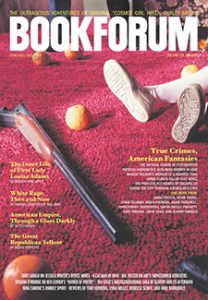 For over 20 years, Bookforum has showcased daring writing about the important ideas of our time, with incisive essays on politics, pop culture, literature, and the arts. Bookforum follows in the rich tradition of Artforum, its sister magazine, featuring reviews and criticism by both distinguished figures and exciting new voices.
For over 20 years, Bookforum has showcased daring writing about the important ideas of our time, with incisive essays on politics, pop culture, literature, and the arts. Bookforum follows in the rich tradition of Artforum, its sister magazine, featuring reviews and criticism by both distinguished figures and exciting new voices.
Bookforum’s Summer issue on “True Crimes, American Fantasies” with writing from Gary Indiana, Terry Castle, Dana Spiotta, and more is on newsstands now.
As a CAA member, subscribe today and take advantage of the CAA member rate, PLUS get the True Crimes Summer issue free! Subscribe to Bookforum, and receive six issues of the best in literature and cultural affairs for just $15.
If you live in the US, you can also receive Bookforum at no additional cost with your subscription to Artforum. Subscribe to Artforum at the member rate of $45 per year. CAA members, please log into your account to access the special discount code and unlock both offers.




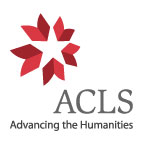


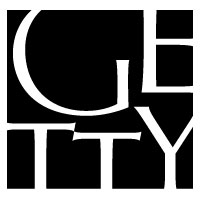

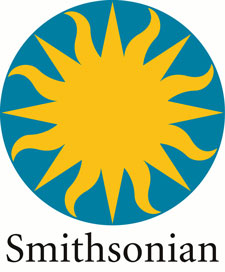

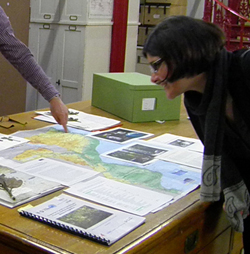 Luciana Martins
Luciana Martins
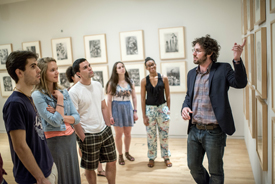 John Murphy
John Murphy
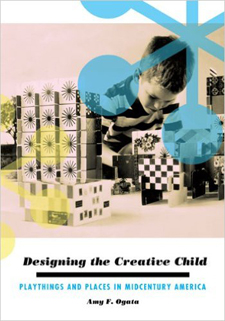

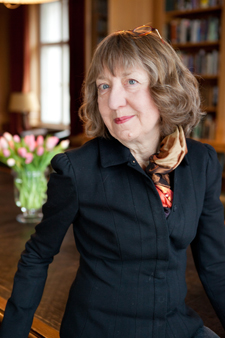 Corine Schleif (photograph by Annette Hornischer)
Corine Schleif (photograph by Annette Hornischer)


 Imogen Cunningham, Double Image of Joseph Sheridan, 1931, gelatin silver print, 10 x 7½ in. (artwork © Imogen Cunningham Trust)
Imogen Cunningham, Double Image of Joseph Sheridan, 1931, gelatin silver print, 10 x 7½ in. (artwork © Imogen Cunningham Trust)
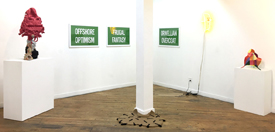 Installation view of Laughing Out Loud
Installation view of Laughing Out Loud
 Barbara Weissberger, “Night Light,” 2014, digital photograph/archival pigment print (artwork © Barbara Weissberger)
Barbara Weissberger, “Night Light,” 2014, digital photograph/archival pigment print (artwork © Barbara Weissberger)


